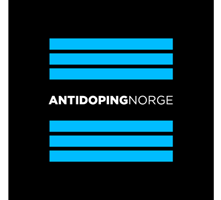Elbow Problems and Conservative Solutions
By Charles Staley, B.Sc, MSS
Co-authored with Dr. Sal Arria
Director, Staley Training Systems
http://www.staleytraining.com/ecm8/ezGaffurl.php?offer=xxxxx&pid=1
Considering the incredible and constant strain that it's subjected to, the elbow is a stoic joint indeed. The elbow is a ginglymus or hinge type joint formed by the humerus bone of the upper arm and the radius and ulna bones of the lower arm. Although only flexion and extension occur around the elbow itself, the joint also permits rotation of the radius around the ulna.
Like the knee, the elbow is encased within an extensive synovial membrane, which synthesizes synovial fluid for the purpose of lubricating the joint.The elbow is quite stable, owing to the numerous tendons and ligaments that contribute to it's integrity. In fact, many people are amazed to learn that over a dozen muscles cross the elbow joint— not just the biceps and triceps!
Causes and Pre-conditions for Elbow Problems: A Closer Look at the Problem
Acute traumatic elbow injuries are thankfully rare. Those that do occur are almost always the result of extreme stress in power and explosion events such as Olympic weightlifting and throwing. Falls (such as in skating, football, rugby, and equestrian events) and impact (as in football, combat sports, and hockey) also sometimes result in sudden traumatic elbow injury. Traumatic injuries of any type must receive immediate medical attention by a qualified sports medicine physician.
Chronic injuries in the elbow are usually a result of overuse. Boxers often suffer from such conditions. Of great importance is the fact that most trainees fail to consider the cumulative impact of all stressful events on the elbow, limiting their attention to training-related stress only. On the job, mechanics (constant work with wrenches, screwdrivers, etc.), secretaries and office workers (constant typing, and writing), and health professionals (massage, physiotherapy, and other forms of physical manipulations) are at risk for repetitive overuse syndrome (R.O.S.) to the elbow, due to constant and excessive contracture of the gripping muscles— all of which cross the elbow joint.
Most R.O.S. of the elbow is seen in the dominant side, so "handedness" becomes an additional factor to consider in these types of injuries.
Among athletes, throwing, particularly in baseball and the javelin event are leading causes of R.O.S. of the elbow. Boxers are also susceptible (from the high volume of punches thrown in training and competition), as are tennis players and golfers. Bodybuilders, fitness enthusiasts, and recreational athletes are not by any means immune to R.O.S.
The biggest problem with the elbow is the tiny size of the tendinous attachment sites, of which there are many. These sites can become progressively weakened by both impact and the dynamic forces of leverage. This leverage means that 10 pounds in the hand equals approximately 45 pounds at the shoulder joint, for a person with average arm length.
Another way to view this phenomenon is to compare the force you get by turning a bolt with a long handled wrench, as opposed to a short handled wrench. Now consider that a tennis player, for instance, makes this already long lever even longer by putting a racquet in the hand! The impact of repetitively hitting the ball, compounded by the very long lever arm created by the racquet, results in cumulative microtrauma to the tendinous attachment sites at the elbow.
Over time, if not treated, these tendons actually begin to fray, much like a nylon rope would if stretched beyond it's tensile strength. Eventually, the tendon can detach from it's attachment site at the elbow, requiring surgical repair.
Treatment Options: from Conservative to Radical
-
Rest: The most effective yet overlooked aspect of post-injury recovery is simply to become more aware of and markedly limit activities that cause pain and swelling to the affected area! In light of the elbows ubiquitous role in almost all human activity, this is no easy task!
-
Forearm Strap: Used by tennis players, golfers, and other athletes with elbow problems. The strap acts like a "shunt," absorbing impact and vibrational forces before they reach the tendinous attachment at the elbow. One of the best straps is the Interceptor, by Weider.
-
Aspirin Therapy: Aspirin reduces edema (swelling). Recovery simply does not begin until edema has subsided. Experiment with dosages— in many cases, low dosages of aspirin work just as well as large doses, with less possibility of stomach irritation. To protect your stomach lining even further, try crushing the aspirin tablets between 2 spoons and mixing them into a glass of milk. Since the body eventually develops a tolerance to it., use aspirin judiciously— only when needed most. Always check with your physician before implementing a regular schedule of aspirin therapy, no matter how small the dose.
-
Diathermy: A high frequency form of heat which can penetrate as deep as 2 1/2 inches into injured tissues. Administered by a chiropractor or physical therapist, diathermy promotes circulation to the injury site, accelerating the healing process. Diathermy should precede cryo-therapy treatments.
-
Electro-stimulation: Moderate to intense amounts of intermittent electrostimulation are applied directly to the injured tendinous area for 10-15 minutes per session. This form of electrostimulation is most effective when it follows diathermy and is followed up with cryo-therapy.
-
Cryo-therapy: After diathermy, construct an ice pack by placing crushed ice in a "zip-lock" bag. Cryo-therapy is very beneficial in reducing edema, reducing pain, and pumping muscular tissues free of accumulated training-induced waste products. Spend at least 15, but no longer than 20 minutes on the ice.
- Cortico-steroids: Administered by injection to the injury site, corticosteroids help to reduce inflammation and pain. The drawback, however, is that these agents cause a breakdown of collagenous and ligamentous tissue after repeated injections.
-
Proliferent-injection Therapy: is injected directly into the injury site, causing an "artificial injury" which then provokes the collagenous cells to begin restructuring themselves more quickly.
- Surgery: In the most extreme cases, a torn or avulsed tendon or ligament may require surgical re-attachment. This is "the final straw" when it comes to solutions for joint problems! Many methods are used, including tendon grafts, and stapling.
Prevention is the Key
Fortunately, most serious elbow problems can be completely prevented with good training and work habits, and immediate intervention upon the onset of trouble. Never train through elbow pain— instead, seek the immediate guidance of a qualified sports medicine physician or chiropractor.







